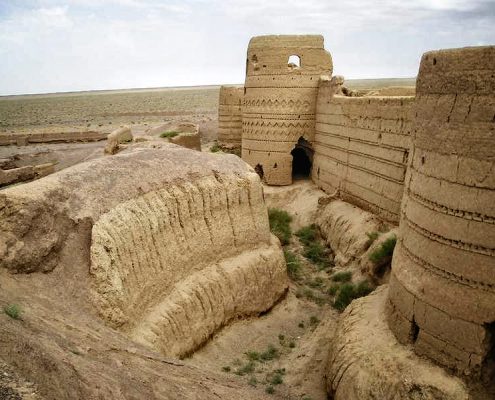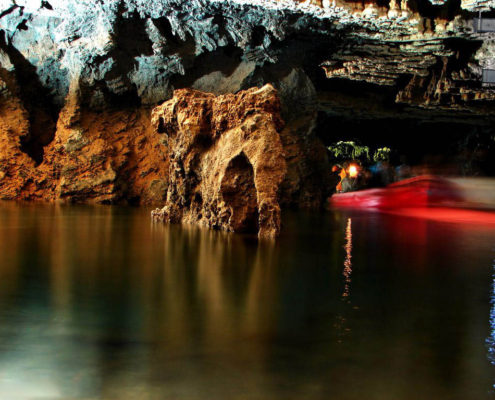Posts
 https://irandoostan.com/dostcont/uploads/2017/01/traveltoiran-dzordzoriran.jpg
948
1417
Mina Bagheri
https://irandoostan.com/dostcont/uploads/2025/05/Irandoostan-logo.webp
Mina Bagheri2017-01-04 17:06:162025-04-13 15:19:47Iran World Heritage Sites (West & North-West of Iran)
https://irandoostan.com/dostcont/uploads/2017/01/traveltoiran-dzordzoriran.jpg
948
1417
Mina Bagheri
https://irandoostan.com/dostcont/uploads/2025/05/Irandoostan-logo.webp
Mina Bagheri2017-01-04 17:06:162025-04-13 15:19:47Iran World Heritage Sites (West & North-West of Iran) https://irandoostan.com/dostcont/uploads/2016/12/Karshahi-Castle-2.jpg
600
800
Travel to Iran
https://irandoostan.com/dostcont/uploads/2025/05/Irandoostan-logo.webp
Travel to Iran2016-12-27 09:20:292025-04-16 14:52:43Karshahi Castle, the Biggest adobe Castle in Iran
https://irandoostan.com/dostcont/uploads/2016/12/Karshahi-Castle-2.jpg
600
800
Travel to Iran
https://irandoostan.com/dostcont/uploads/2025/05/Irandoostan-logo.webp
Travel to Iran2016-12-27 09:20:292025-04-16 14:52:43Karshahi Castle, the Biggest adobe Castle in Iran
Christmas in Iran: How Do Iranians Celebrate Christmas?
With the arrival of the joyful Christmas season, Iranian…
 https://irandoostan.com/dostcont/uploads/2016/12/badroud-2.jpg
413
550
Travel to Iran
https://irandoostan.com/dostcont/uploads/2025/05/Irandoostan-logo.webp
Travel to Iran2016-12-24 16:19:472025-04-13 15:20:31Badrud, the Ancient City of Pomegranate
https://irandoostan.com/dostcont/uploads/2016/12/badroud-2.jpg
413
550
Travel to Iran
https://irandoostan.com/dostcont/uploads/2025/05/Irandoostan-logo.webp
Travel to Iran2016-12-24 16:19:472025-04-13 15:20:31Badrud, the Ancient City of Pomegranate https://irandoostan.com/dostcont/uploads/2016/12/Noroze-Sayad-8.jpg
431
700
Travel to Iran
https://irandoostan.com/dostcont/uploads/2025/05/Irandoostan-logo.webp
Travel to Iran2016-12-20 15:00:502025-04-13 15:20:32Best Places to Visit in Iran in Winter + Photos
https://irandoostan.com/dostcont/uploads/2016/12/Noroze-Sayad-8.jpg
431
700
Travel to Iran
https://irandoostan.com/dostcont/uploads/2025/05/Irandoostan-logo.webp
Travel to Iran2016-12-20 15:00:502025-04-13 15:20:32Best Places to Visit in Iran in Winter + Photos https://irandoostan.com/dostcont/uploads/2016/12/16462.jpg
414
600
Travel to Iran
https://irandoostan.com/dostcont/uploads/2025/05/Irandoostan-logo.webp
Travel to Iran2016-12-18 11:22:322025-04-13 15:21:06Zavareh, a small city for history lovers
https://irandoostan.com/dostcont/uploads/2016/12/16462.jpg
414
600
Travel to Iran
https://irandoostan.com/dostcont/uploads/2025/05/Irandoostan-logo.webp
Travel to Iran2016-12-18 11:22:322025-04-13 15:21:06Zavareh, a small city for history lovers https://irandoostan.com/dostcont/uploads/2016/12/The-Underground-City-of-Noosh-Abad-1.jpg
600
800
Travel to Iran
https://irandoostan.com/dostcont/uploads/2025/05/Irandoostan-logo.webp
Travel to Iran2016-12-12 11:28:002025-04-13 15:21:07Nushabad Underground City: Photos, location, history
https://irandoostan.com/dostcont/uploads/2016/12/The-Underground-City-of-Noosh-Abad-1.jpg
600
800
Travel to Iran
https://irandoostan.com/dostcont/uploads/2025/05/Irandoostan-logo.webp
Travel to Iran2016-12-12 11:28:002025-04-13 15:21:07Nushabad Underground City: Photos, location, history https://irandoostan.com/dostcont/uploads/2016/12/NATANZ-3.jpg
1333
2000
Travel to Iran
https://irandoostan.com/dostcont/uploads/2025/05/Irandoostan-logo.webp
Travel to Iran2016-12-10 13:33:022025-04-13 15:21:08Natanz: History & Photos
https://irandoostan.com/dostcont/uploads/2016/12/NATANZ-3.jpg
1333
2000
Travel to Iran
https://irandoostan.com/dostcont/uploads/2025/05/Irandoostan-logo.webp
Travel to Iran2016-12-10 13:33:022025-04-13 15:21:08Natanz: History & Photos
Which Countries Celebrate Nowruz?
Nowruz, also known as the Persian New Year, is one of the most…
 https://irandoostan.com/dostcont/uploads/2016/11/Sheikh-Safi-Khānegāh-and-Shrine-7-1.jpg
1000
1500
Travel to Iran
https://irandoostan.com/dostcont/uploads/2025/05/Irandoostan-logo.webp
Travel to Iran2016-11-26 13:25:462025-04-13 15:21:58Sheikh Safi al-Din Khanegah and Shrine
https://irandoostan.com/dostcont/uploads/2016/11/Sheikh-Safi-Khānegāh-and-Shrine-7-1.jpg
1000
1500
Travel to Iran
https://irandoostan.com/dostcont/uploads/2025/05/Irandoostan-logo.webp
Travel to Iran2016-11-26 13:25:462025-04-13 15:21:58Sheikh Safi al-Din Khanegah and Shrine
Abyaneh Village, Red Village of Iran: History, Photos & more
Abyaneh is a historic village in Isfahan province of Iran close…
 https://irandoostan.com/dostcont/uploads/2016/10/1434283697_zj80jui.jpg
1325
2000
Travel to Iran
https://irandoostan.com/dostcont/uploads/2025/05/Irandoostan-logo.webp
Travel to Iran2016-10-26 12:20:492025-04-13 15:22:29Pasargadae Tomb of Cyrus the Great (Photos, Video)
https://irandoostan.com/dostcont/uploads/2016/10/1434283697_zj80jui.jpg
1325
2000
Travel to Iran
https://irandoostan.com/dostcont/uploads/2025/05/Irandoostan-logo.webp
Travel to Iran2016-10-26 12:20:492025-04-13 15:22:29Pasargadae Tomb of Cyrus the Great (Photos, Video) https://irandoostan.com/dostcont/uploads/2016/06/Deylaman.jpg
400
640
Travel to Iran
https://irandoostan.com/dostcont/uploads/2025/05/Irandoostan-logo.webp
Travel to Iran2016-09-27 06:07:472025-04-13 15:22:42Iran Autumn: Best Places to visit in Iran in Autumn
https://irandoostan.com/dostcont/uploads/2016/06/Deylaman.jpg
400
640
Travel to Iran
https://irandoostan.com/dostcont/uploads/2025/05/Irandoostan-logo.webp
Travel to Iran2016-09-27 06:07:472025-04-13 15:22:42Iran Autumn: Best Places to visit in Iran in Autumn https://irandoostan.com/dostcont/uploads/2016/08/alisadrcave-traveltoiran5-e1516533365789.jpg
525
700
Mina Bagheri
https://irandoostan.com/dostcont/uploads/2025/05/Irandoostan-logo.webp
Mina Bagheri2016-08-31 04:59:502025-04-13 15:23:04World longest caves in Iran: Ali sadr cave, Salt cave, & Para
https://irandoostan.com/dostcont/uploads/2016/08/alisadrcave-traveltoiran5-e1516533365789.jpg
525
700
Mina Bagheri
https://irandoostan.com/dostcont/uploads/2025/05/Irandoostan-logo.webp
Mina Bagheri2016-08-31 04:59:502025-04-13 15:23:04World longest caves in Iran: Ali sadr cave, Salt cave, & Para
Naqsh-e Jahan Square, Isfahan (History, Photos, Location)
Naqsh-e Jahan Square, also known as Imam Square, is one of the…

A Persian Thanksgiving on Yalda Night
The origin of Yalda Night
On the days that Zoroastrianism was…

Mehregan Celebration; The Persian Festival of Autumn
Autumn starts with the month of Mehr in Persia, and its 16th…


